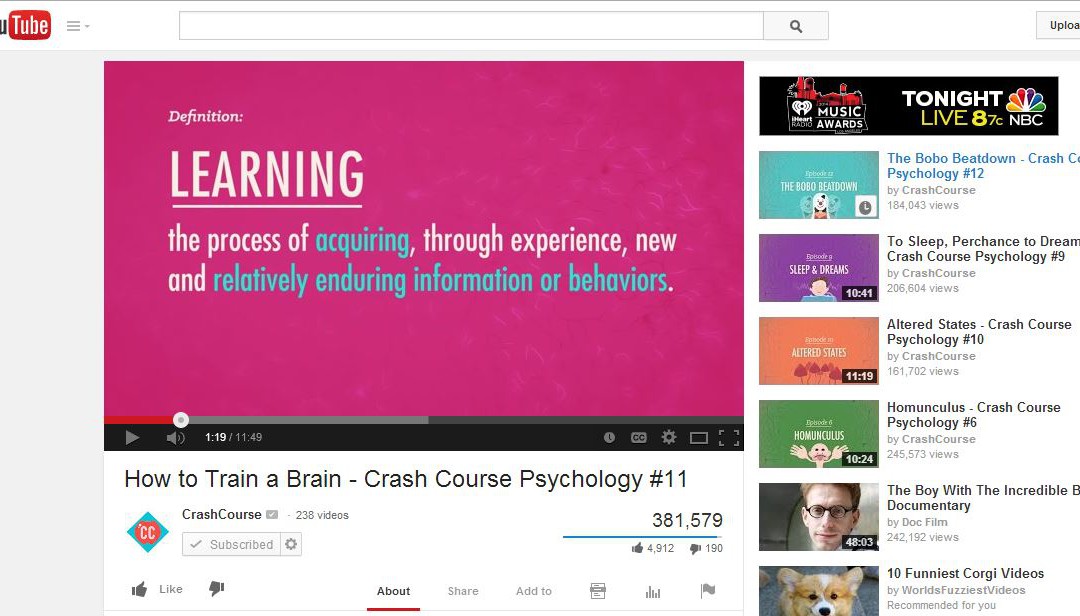As content marketing is quickly evolving and shaping due to Google standards and real people standards, the ability to churn out high-quality content that caters to the limited time and the desire for more in-depth information can be difficult. However, dedicating a decent budget will be necessary as Cisco Visual Networking Index says by 2017, global video traffic will be 69% of consumer Internet traffic.
Taking the time to plan out, develop, film, and edit videos can be time consuming and doing it properly also takes more time. People are at a point where technology and content ought to be entertainment meets education. There’s plenty of education out there and there’s plenty of entertainment, combining the two makes for a more lasting impression.
Why Videos?
Internet marketers know the value of strong imagery and the ability for it to grasp someone’s attention quicker than text. Appealing to visual learners, images are quicker to process than words but also quicker to disengage from. Maintaining one’s attention is more difficult yet crucial if you plan on selling a product or service, hence, videos. They’re easy to share and the switching of camera angles helps viewers to maintain focus, much like a movie or TV show would do.
Videos Now
YouTube started in 2005 and is maintains the status as the second largest search engine in the world with over one billion unique visitors per month. The biggest channel, PewDiePie, a Swedish video game commentator, has over 26 million subscribers. Here you get the entertainment of the commentator and video games and the education of how to get through different levels of games.
Many videos are self-made, an industry of entrepreneurship and self-made celebrity. People are interested in real-time content creation that taps into pop culture and various cultures in general. Similar to the entertainment value of cooking shows where you get to see the chef chopping up vegetables, seasoning, and sautéing right before your eyes, people love online videos. It’s entertaining and educational.
There is a movement towards free online education alongside this. Many big universities are putting their lectures online for anybody to access such as Harvard, Berkeley, and MIT. You can’t get a degree out of it, but you can certainly continue your education on your own time. There are many educational channels now on YouTube as well that speaks directly to the geeks in us all where you can enjoyably learn a thing or two. SciShow, CrashCourse, and MinutePhysics are a few of the more popular educational-focused channels.
Marketing on YouTube
On the other hand, “Hauls” have always been popular and more directly sell. These people get a bunch of products and review them in their videos. They explain what the product is, how to use it, and their thoughts about it and they do very well. However, it’s important to remember that trust and transparency are essential as people can tell if there is just blatant product promotion.
Vine consists of seven-second videos, requiring very quick story-telling and the punch. Lowe’s does a great job of this by showing how-to home projects. It inspires people to say, “Hey, I could do that too.” A lot of what videos do is empower the viewers through educating them and appealing to their emotions.
The benefit of videos is that you can bring your product to life. It’s not just a jacket hanging on a hook, it’s what keeps you warm as you’re exploring a mountain. It’s not just a water bottle, it’s your source of refreshment when you’re hanging out with friends.
A way to think about videos is that they are a bunch of mini commercials and how-to’s. At times it may not directly sell a product but the value of the brand awareness is strong and often provides increases in in-store traffic and online visitors.


